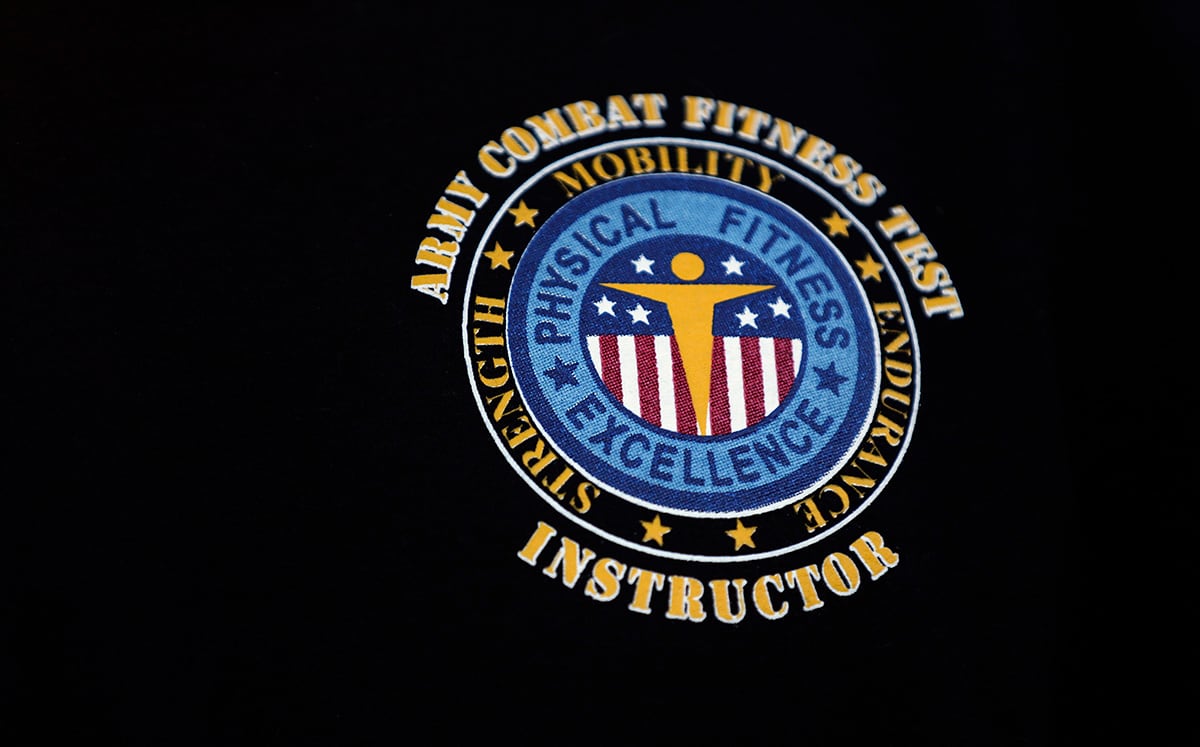WASHINGTON — The Army National Guard is looking for nearly 5,000 fitness instructors and buying roughly $40 million in workout equipment in the next seven months to help its soldiers meet new physical fitness standards being set by the military service.
But even as commanders begin delivering the new 10-pound medicine balls, pull-up bars and hexagon barbells, they also worry whether America’s 330,000 citizen soldiers will have the time and the drive to master the new, more grueling Army fitness test.
"For those who are already doing well on their physical fitness test and they have the routine figured out, I think they're going to transition to this new test without any issues," said Army National Guard Lt. Col. Brian Dean, who is responsible for implementing the new test across the Guard. "People who are in those parts of their life where they're still kinda struggling to make the right time for fitness and do fitness in the right ways — this will feel significant."
Could the new physical demands drive soldiers out of the Guard? “It’s a concern,” Dean said.

Spread out in more than 2,800 armories around the country, members of the Army Guard are required to do weekend duty once a month and a two-week stint during the year. A number of units are also tapped by state governors for help during hurricanes, wildfires, border problems and other events. And, during the peak of the Iraq and Afghanistan wars, Guard units were routinely called up for active-duty deployments to fill needs that couldn't be met by the overstretched active-duty troops in the battle zones.
Still, many Guard members see more limited duty, and are often focused on their full-time jobs and other commitments, which can be hundreds of miles from the nearest military base.
"Ninety percent of my soldiers are part-time," Maj. Gen. Timothy Orr, the adjutant general for the Iowa National Guard, told The Associated Press in an interview. "I think there's apprehension. There's always the question of how are we going to do this with the time that we have, and the equipment we have."
Orr, who has been in the Guard for 40 years, said that a key unanswered issue will be how soldiers with various permanent physical limitations will be treated, particularly those who have served for many years. Under the current fitness test, troops can arrange to substitute certain exercises for ones they can't do.
RELATED

For example, someone with a knee injury who can't run two miles is able to substitute swimming or bicycling for part of the current fitness test. Orr said the Army is still working through the details, so it's not clear yet how they will handle the matter and whether there will be alternate tests.
"I think we have committed troops today, committed leaders, and folks will step up to the challenge," said Orr, who has about 8,600 Guard soldiers in his state. "There may be select individuals that will say, 'Hey, I've had enough and I want to leave.' But I think we're a professional Army and this is just another of the many challenges we've had, especially over the last 18 years."
The Army's current physical fitness test, which is being replaced by a new more strenuous one, consisted of two minutes of push-ups and sit-ups and a two-mile run. By Oct. 1, Army soldiers will begin taking the new test, which takes about an hour and includes a deadlift, more difficult push-ups, a sled-drag, an array of other exercises, and ends with the two-mile run.
Beginning Oct. 1, 2020, all soldiers will have to routinely pass the new test in order to qualify for their military jobs.
Dean said the Guard wants to give its soldiers a full year to learn and train for the new test. So, all the equipment and trainers must be in place in all the armories by October.
"What we don't want is to have people who never trained on weight-lifting equipment grabbing that stuff and injuring themselves," Dean said.
Orr said he would like to see physical therapists assigned to each state that can help Guard soldiers prevent injuries or help them heal if they get hurt.
Dean said the Army is providing funding for the equipment and Guard leaders are working out how much of it has to be delivered to each armory and state training center. Since units across the country are different sizes and compositions, it will take time to figure out how much equipment each community needs.
The biggest challenge, said Dean, is the timeline — particularly identifying the thousands of trainers needed to staff all of the armories and work with soldiers on the new fitness regime. It takes about two days to get someone certified, and he said that so far only about 500 of the needed 5,000 trainers are in place.
Getting the rest, he said, “is a challenge, but it’s not insurmountable.”





